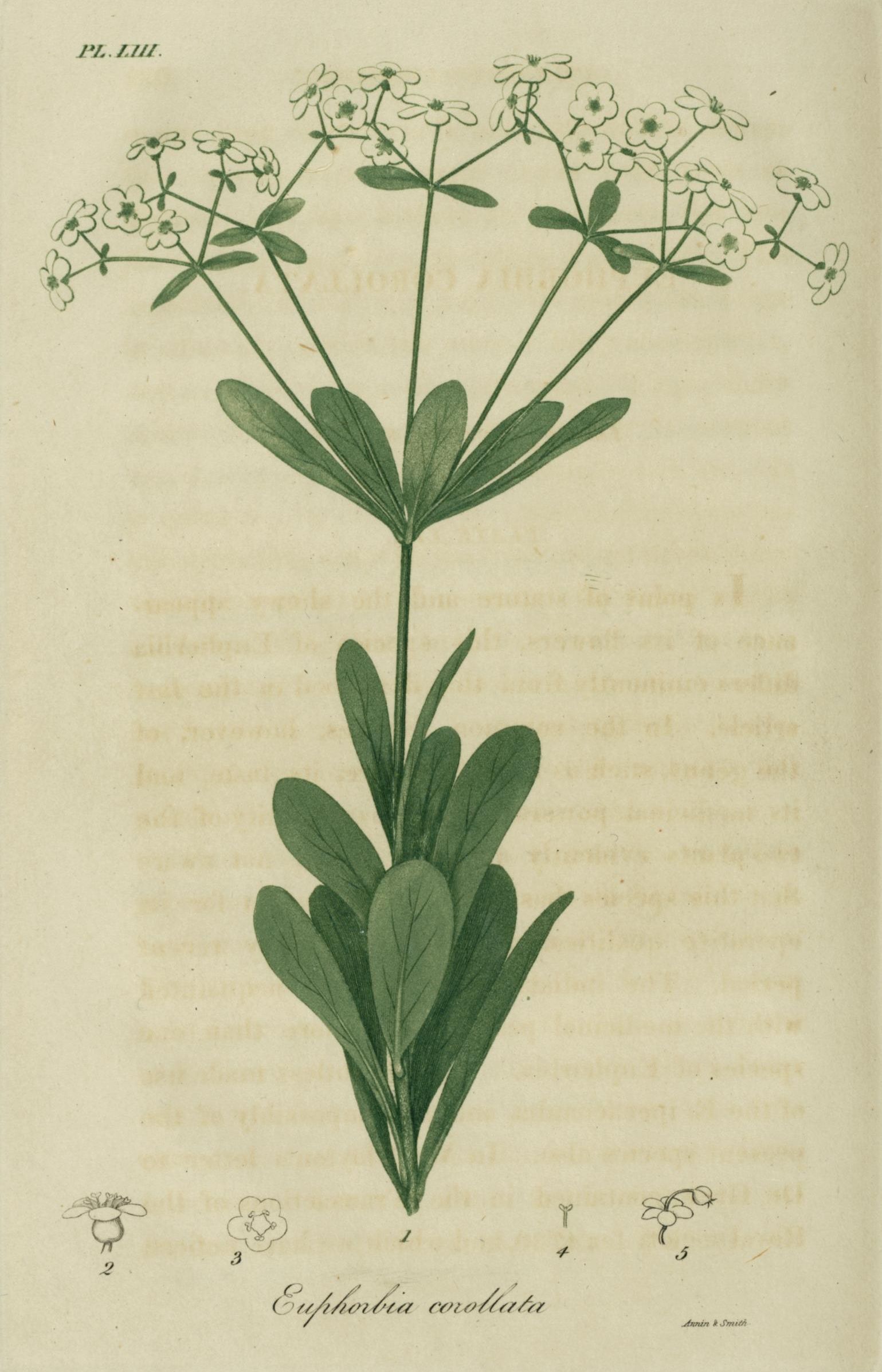Euphorbia Corollata on:
[Wikipedia]
[Google]
[Amazon]
''Euphorbia corollata'' is an herbaceous perennial plant in the family 
Euphorbiaceae
Euphorbiaceae, the spurge family, is a large family of flowering plants. In English, they are also commonly called euphorbias, which is also the name of a genus in the family. Most spurges, such as '' Euphorbia paralias'', are herbs, but some, ...
that is native to North America. A common name for the species is flowering spurge. It has a milky sap that can cause skin and eye irritation in some people. It grows up to 1 m (3 ft) tall, with smooth stems and light green leaves arranged alternately or in whorls. Leaves are about 10 mm (1/2 in) wide and 75 mm (3 in) long. Each stem terminates in a panicle 20 to 25 mm (3/4 to 1 in) across. Flowers are about 6 mm (1/4 in) across and consist of one pistillate and several staminate flowers surrounded by five white bracts - not petals but formed from the involucre
In botany, a bract is a modified or specialized leaf, especially one associated with a reproductive structure such as a flower, inflorescence axis or cone scale. Bracts are usually different from foliage leaves. They may be smaller, larger, or o ...
at the base of the flowers. Flowering spurge blooms from June to September.

Range and habitat
Flowering spurge grows in most soil types as long as they are well-drained. It is usually found in prairies, pastures, glades, and along roads and train tracks. It has excellent drought tolerance and develops a deep taproot. It is difficult to transplant once established. Flowering spurge is native from Texas north to South Dakota and east to the Atlantic coast.Faunal associations
The flowers are pollinated by a variety of insects including bees, wasps, flies, and butterflies. Other insects feed on foliage, stems, and other parts of the plant, although mammals avoid it because of its toxic sap. Seeds are fed on bywild turkey
The wild turkey (''Meleagris gallopavo'') is an upland ground bird native to North America, one of two extant species of turkey and the heaviest member of the order Galliformes. It is the ancestor to the domestic turkey, which was originally d ...
, greater prairie chicken
The greater prairie chicken or pinnated grouse (''Tympanuchus cupido''), sometimes called a boomer,Friederici, Peter (July 20, 1989)"The Last Prairie Chickens" ''Chicago Reader''. Retrieved August 27, 2014.(Chinese ä¸æ–‡ï¼šå¸•è‰ºæ˜Žå½©å¤§å‡¤å‡ ...
, bobwhite quail
The northern bobwhite (''Colinus virginianus''), also known as the Virginia quail or (in its home range) bobwhite quail, is a ground-dwelling bird native to Canada, the United States, Mexico, and Cuba, with introduced populations elsewhere in t ...
, mourning dove
The mourning dove (''Zenaida macroura'') is a member of the dove family, Columbidae. The bird is also known as the American mourning dove, the rain dove, and colloquially as the turtle dove, and was once known as the Carolina pigeon and Caroli ...
, and horned lark
The horned lark or shore lark (''Eremophila alpestris'') is a species of lark in the family Alaudidae found across the northern hemisphere. It is known as "horned lark" in North America and "shore lark" in Europe.
Taxonomy, evolution and systema ...
.
Uses
The plant can be used as a laxative, but is poisonous if eaten in quantity.References
corollata Flora of North America Plants described in 1753 Taxa named by Carl Linnaeus {{Euphorbia-stub